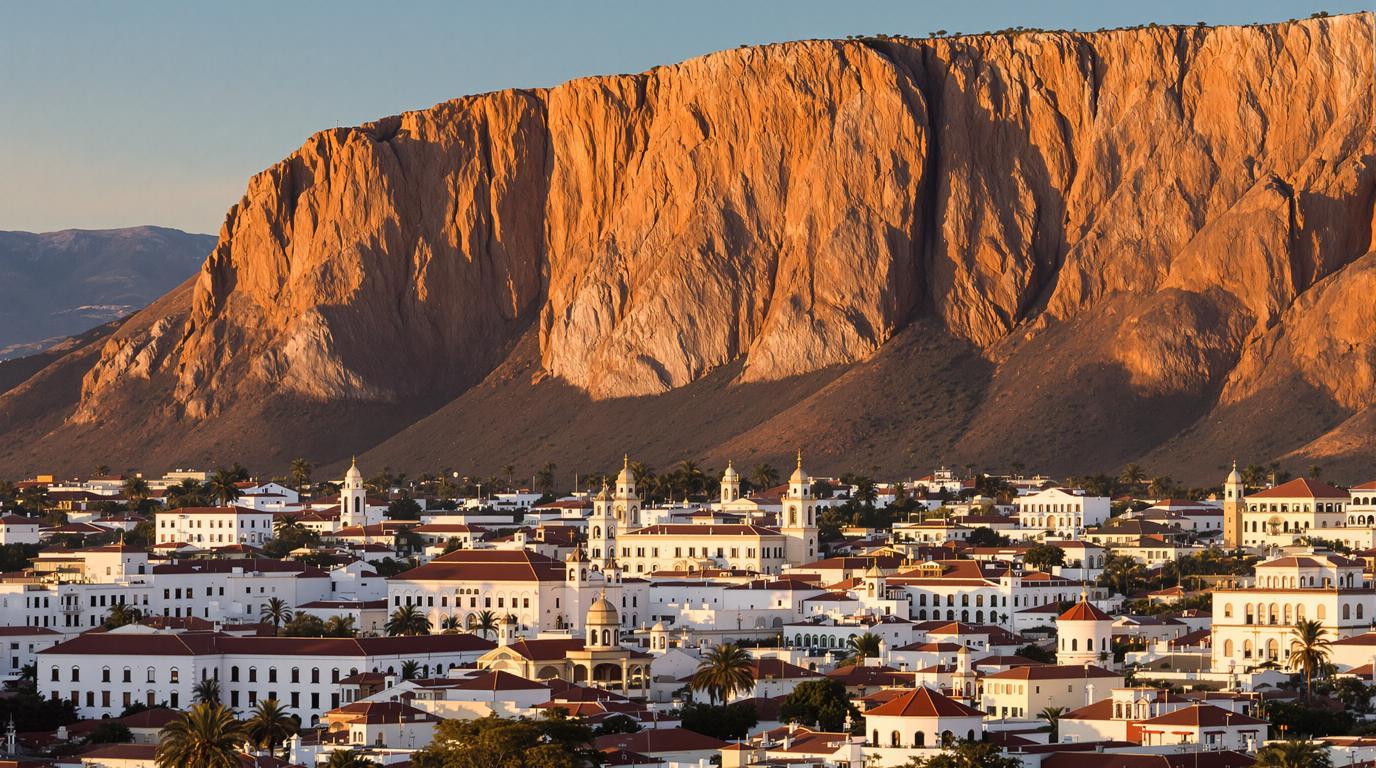Sucre, Bolivia’s white-washed wonder, rises from the mountains like a colonial masterpiece frozen in time. Known as Bolivia’s constitutional capital, this 2,800-meter-high city dazzles with its pristine architecture that earned it UNESCO World Heritage status. Unlike the chaotic energy of La Paz, Sucre moves at a gentler pace, inviting travelers to wander through centuries of history where independence was born and Spanish influence remains etched in stone.
The architectural canvas that defies time
Walking through Sucre’s historic center feels like stepping onto a movie set. The immaculately preserved Spanish colonial buildings glow with their characteristic white facades and terracotta-tiled roofs, creating a stunning contrast against the azure Bolivian sky. This architectural uniformity wasn’t accidental – strict building codes have preserved this aesthetic for centuries.
Local historian Rafael Mendoza explains,
“The white wasn’t just for beauty. The lime-based paint helped protect buildings from the harsh Andean sun and prevented deterioration of the volcanic stone beneath.”
This practical choice created one of South America’s most visually striking cities.
Where independence was born
Sucre’s peaceful streets belie its revolutionary history. At Casa de la Libertad, independence from Spanish rule was declared in 1825, making this modest building the birthplace of Bolivia. The original declaration document still rests behind glass, its ink faded but its significance undimmed.
Unlike many historical attractions that feel removed from daily life, Casa de la Libertad remains central to Sucre’s identity. School children make pilgrimages here, much like American students visiting Independence Hall in Philadelphia or historic cathedrals in Europe.
The hidden dinosaur highway
Just outside the city lies Cal Orck’o, a vertical wall of limestone bearing over 5,000 dinosaur footprints – the largest collection on Earth. These prehistoric tracks were accidentally discovered when workers expanded a local cement quarry, revealing a 1.5-kilometer “dinosaur highway” dating back 68 million years.
The vertical orientation of these once-horizontal tracks demonstrates the raw power of tectonic forces that shaped Bolivia’s landscape. It’s a surreal experience that rivals the gravity-defying geological formations found in certain Italian villages.
A textile tradition spanning millennia
Sucre’s ASUR Museum showcases the extraordinary textile traditions of indigenous communities from the surrounding Chuquisaca region. Here, weavings tell stories through intricate patterns and symbols, creating a vibrant visual language that predates European arrival.
Master weaver Lucia Tarabuco shares,
“Each pattern has meaning – mountains, rivers, our ancestors. When I weave, I connect with thousands of years of my people’s history.”
The museum offers more than displays; it supports a living tradition through its foundation work.
The market that awakens your senses
Mercado Central pulses with daily life as vendors call out their wares amid fragrant spices, colorful produce, and handcrafted goods. Unlike sanitized tourist markets, this is where locals shop, creating an authentic experience that engages all senses.
For the most genuine experience, visit the second floor where food stalls serve regional specialties like chorizo chuquisaqueño. These local sausages paired with choclo (Andean corn) offer flavors you won’t find elsewhere – a culinary tradition as protected as the buildings themselves.
The viewpoint that captures it all
For a breathtaking perspective, climb to La Recoleta monastery at sunset. This 16th-century complex offers panoramic views of Sucre’s white expanse against the backdrop of distant mountains. The changing light paints the city in gold before darkness falls and streetlights twinkle like earthbound stars.
This vantage point reveals why Sucre deserves comparison with other magnificent viewpoints, from medieval French villages perched above valleys to secluded island paradises.
Where time stands still but learning never stops
Home to one of the Americas’ oldest universities (founded in 1624), Sucre balances historical preservation with intellectual progress. The city’s affordability has made it Bolivia’s Spanish-learning capital, with language schools offering personalized instruction for around $5 per hour.
“Students come for Spanish and stay for the city,” explains language instructor Carlos Mendez.
“There’s something magical about learning a colonial language while surrounded by colonial architecture that hasn’t changed in centuries.”
Sucre offers travelers something increasingly rare: an authentic glimpse into a colonial past without the feeling of visiting a museum. Here, history breathes in whitewashed walls, indigenous traditions thrive alongside Spanish heritage, and unlike remote island destinations, this Bolivian treasure remains accessible yet remarkably uncrowded – a white jewel waiting to be discovered.
